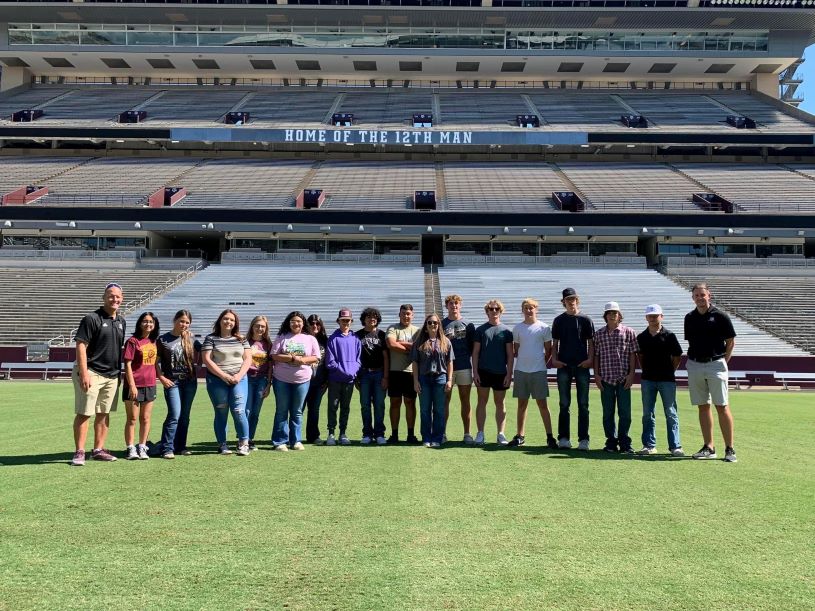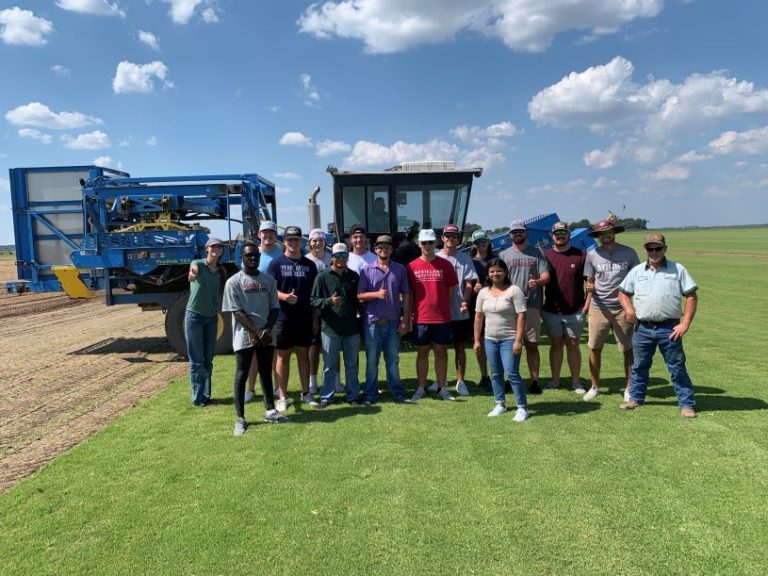Editor’s Note: In this series, we will profile various colleges and universities through conversations with key players at major institutions, as we discuss their turfgrass programs and provide insight into the industry education that is available to the next generation of sports field managers. First up is Texas A&M University.
The Department of Soil and Crop Sciences at Texas A&M University is one of the largest departments of its kind in the nation and is preeminent throughout the world. Students have the option to choose between two hands-on, science-based majors: B.S. in Turfgrass Science or B. S. in Plant & Environmental Soil Science (Crops Emphasis or Soil and Water Emphasis).
Additionally, the Department of Soil and Crop Sciences at Texas A&M University offers minors in Agronomy, Environmental Soil Science, and Plant Breeding.
Through a network of research, extension, and teaching programs, Texas A&M has provided solutions based on sound research, extensive outreach educational programs and assistance through statewide and county extension activities.
Research efforts strive to integrate urban landscape systems to enhance quality of life, develop improved technologies for the management of weeds, diseases, insects, and other important pests, develop turf systems to reduce impact of environmental pollutants, and develop landscape management systems that conserve natural resources.

According to Chase Straw, Ph.D., assistant professor, turfgrass management and physiology, Texas A&M University, the university’s Department of Soil and Crop Sciences currently has more than 20 students majoring in Turfgrass Science, and he anticipates those numbers increasing in coming years.
“We had nine freshman applicants in 2021 that applied to be a Turfgrass Science major, and only two got accepted. So, it is a pretty low acceptance rate,” he said. “However, we have a lot of transfers from junior colleges, and that is how we get a lot of our students. Our recruiting efforts are geared more toward junior colleges. We try to persuade students that once they get their two-year associate’s degree at a junior college to transfer into the Texas A&M Turfgrass Science program, because it is a lot easier to transfer in than it is to get accepted initially.”
Texas A&M offers a four-year Turfgrass Science degree at Texas A&M, but does not offer a two-year degree program.
“I think having the four-year degree professionally gives you the ability to critically think,” said Straw. “College is not necessarily about what you learn in the classroom, but how you develop life skills and learn how to think for yourself and manage your time appropriately. That is going to serve you well when you go out into the world. Everything you learn in the classroom is going to set a foundation for when you start your actual job. You are obviously going to get your hands-on experience when you get into the job, but college will hopefully teach you that work/life balance – especially when you make it to a higher-end job in this industry and have a lot of pressure on you.”
According to Straw, internships are the most valuable experiences for students because they provide hands-on training. “I push students to take quality internships; and in my classes we try to do a lot of site visits so they can get in front of turfgrass managers and can experience things for themselves and see it at somebody’s facility,” he said.
Straw teaches two of Texas A&M turfgrass classes, both of which are for juniors and seniors. His classes feature a lecture one day of the week and then a guest speaker or site visit on another day.
“I have gotten good feedback from students,” said Straw. “It’s encouraging to hear that they see it first in my class and then they go out and do it in their internships. They already have an idea of why to do it, then they learn how to do it when they are on their internships.”
According to Straw, Texas A&M Turfgrass Science students have interned recently at MLS stadiums, the Boston Red Sox, Philadelphia Eagles and one will soon be interning at Carolina Green. Also, two students were recently part of the all-female grounds crew for the Little League Softball World Series.

In terms of the types of careers Texas A&M Turfgrass Science students are pursuing after graduation, Straw said it is a 40/40/20 split of 40 percent sports field management, 40 percent golf course management and 20 percent landscape management.
According to Straw, Texas A&M is one of only a handful of universities that still offers a Turfgrass Science degree. “We had talked about merging everything into Plant and Soil Sciences, but my department head felt that having the Turfgrass Science degree gave us an advantage,” he said.
In terms of research, Texas A&M has a 10-acre research facility. “We usually have three or four Turfgrass Science majors working at our turfgrass research facility,” said Straw. “They are involved in data collection, data entry, and simple analyses. Texas A&M also offers directed studies, where we can develop a research study with them or have them assist with research we have going on, and they get credit for it. I try to let the students develop their own research.”
For more information about Texas A&M’s Turfgrass Science major, visit https://soilcrop.tamu.edu/program/turfgrass/.
SportsField Management magazine will detail other college and university turfgrass programs in coming issues. If you would like your school profiled, please contact John Kmitta at jkmitta@epgacceleration.com or 763-383-4405.


